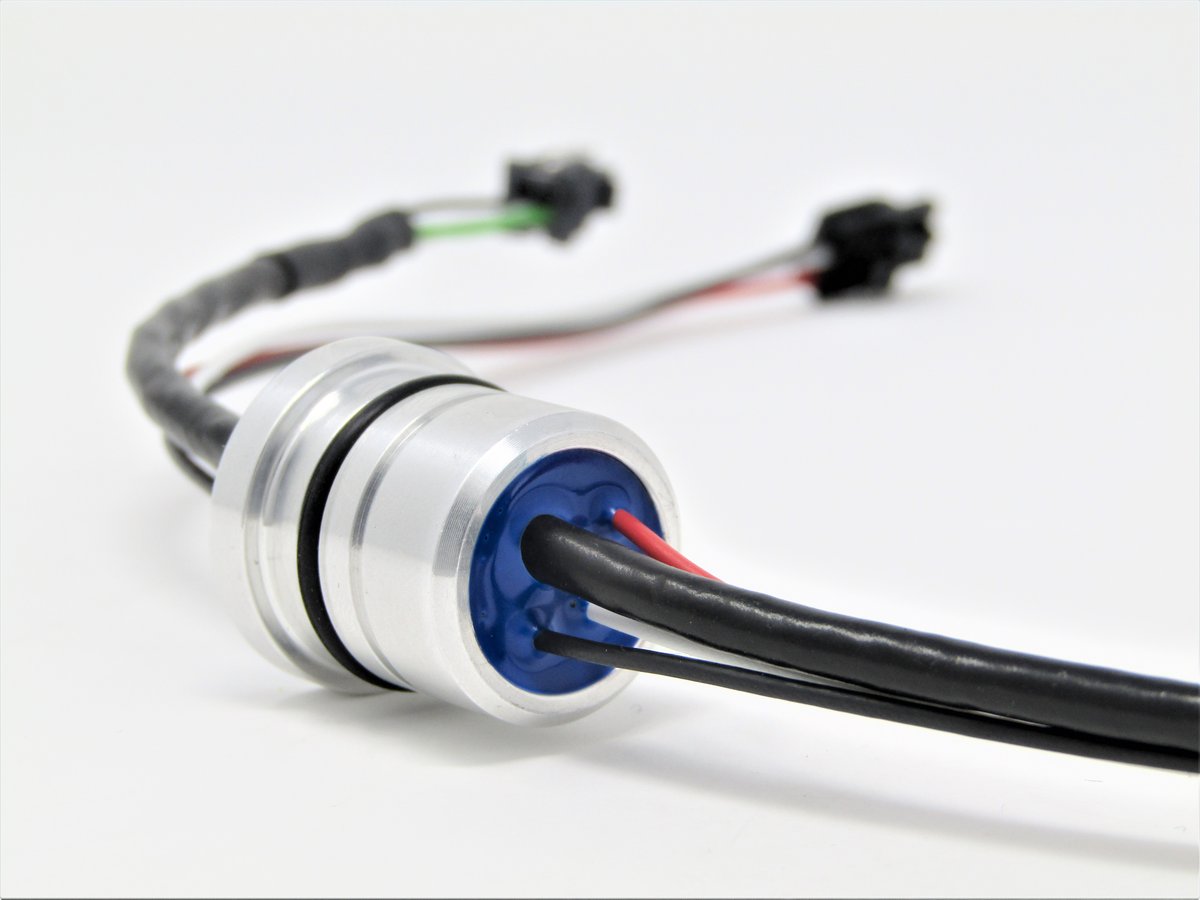Douglas Electrical Components manufactures a variety of hermetic high pressure electrical feedthroughs with varying mechanical interfaces. Hermetic feedthroughs can be installed using O-rings, washers, and retainer rings to maintain the hermetic seal while creating a simple interface for integration into a system or assembly exposed to a high-pressure environment.
Features
- Hermetically seal your high pressure feedthrough over a broad range of environmental conditions
- Save time and effort over threaded connections
- Use any of our electrical connection types
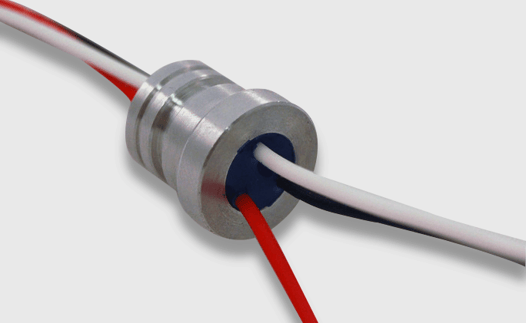
Hermetically seal over a broad range of pressures, temperatures, and chemicals.
One specific option is the radial O-ring feedthrough design using an epoxy resin and stainless-steel, Ryton, or customer-specified material housing. The material variety provides greater options for design engineers to keep costs down, whether it is a simple machined part or custom plastic-molded assembly for OEM applications.
Simple Installation from inside or outside
Radial O-ring feedthroughs can employ a single or multiple O-rings within the design. The O-ring durometer, diameter, and material will be determined based upon pressure, temperature, and liquid/gas compatibility. Multiple O-rings can create redundancy in the hermetic sealing of the feedthrough in the radial O-ring design; faceseal feedthrough mounting is traditionally limited to a single O-ring.
The housing and bulkhead size, length, and material will dictate the maximum pressure performance. Douglas Electrical Components manufactures radial O-ring feedthroughs with a minimum length of 3/8” (0.375”). Common diameters range from 0.25” to 2.50” sizes with custom configurations available upon request.
The mechanical interface to the bulkhead has two traditional approaches. A top hat radial O-ring
installation has three main elements: machined bulkhead top hat that rests against the bulkhead wall on the high pressure or atmospheric pressure side, the O-ring(s) sealing within the bulkhead, and the feedthrough extended beyond the bulkhead into the low pressure or vacuum side; this is then mechanically retained with the addition of a snap ring.
The second method uses a simple counterbore. The feedthrough is installed from within the bulkhead with the counterbore on the higher-pressure side. The counterbore creates pressure retention as pressure is exerted from the high-pressure end. The snap ring is installed within the bulkhead to retain the feedthrough on the higher-pressure side of the bulkhead.
Radial O-rings can save installation time over threaded connections by simply being pressed
into place and retained/secured with a snap ring or retention nut. Additionally, servicing a
press-fit radial seal is simpler than traditional threaded connections when maintenance is
required. While welded connections can eliminate the O-ring seal, the time associated with welding, cost of welding equipment and set ups, and potential impact of welding temperatures on electronics can limit its usability.
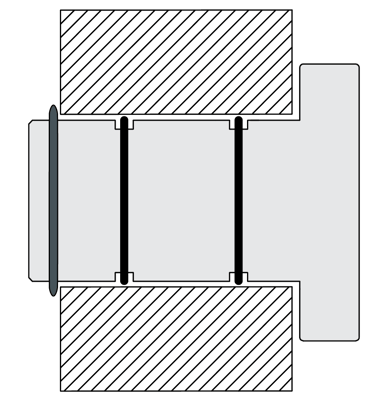
Top-hat Radial O-ring Design
A standard top-hat radial O-ring feedthrough design can feature multiple O-rings for redundance with a snap ring within the low pressure or vacuum side of the hermetic feedthrough to create a hermetic seal.
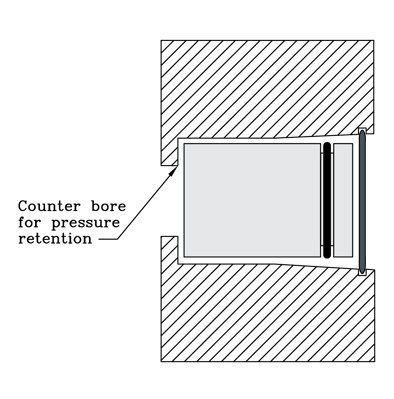
Simple Counterbore Radial O-ring Feedthrough Design
Counter bore hermetic Radial O-ring feedthroughs utilize a counter bore opening for pressure retension, an O-ring seal within a tapered port, and a snap-ring within the high pressure or atmospheric side of the hermetic seal.
RADIAL O-RING SEALS SAVE TIME AND EFFORT OVER THREADED CONNECTIONS TO SEAL YOUR OEM APPLICATIONS.
Use any of our connection types.
Virtually any metallic conductor material is possible including stranded and shielded cables, ribbon cables, thermocouple alloys, fiber optic harnesses, and even PCB’s. Using an epoxy design also allows for a high-density interface into the electronics. Radial O-ring feedthroughs can be designed for power applications as well. Douglas’ StudSeal hermetic power feedthroughs offer custom designs with a radial O-ring.
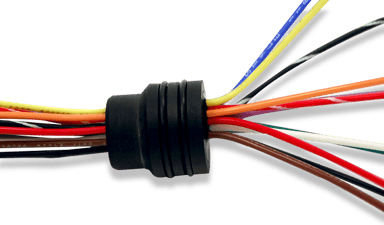
Industries
• Vacuum systems
• Mil/Aero
• HVAC/R
• Hazardous Locations
• Oil & Gas
• Semiconductor
• Military
• Aerospace
Performance Capabilities
| Pressure | 15,000 PSI. Certification to your specifications available. |
| High Pot Test | >30kV DC or >15kVAC |
| Materials | Aluminum, Brass, Stainless Steel standard with other metals, specialty alloys, and plastics possible. Contact factory. |
| Standard Operating Temperature | -40°F to 300°F (-40°C to 149°C) with ability to go lower/higher. Contact factory. |
| Conductor Length | Unlimited lengths for low and high pressure. |
| Leak Testing | < 1x10-9 cc He/sec. Contact factory for more options. |
| Typical Outside Diameters | 0.25” to 2.50”; custom diameters available upon request. |
| Minimum Feedthrough Length | 3/8” (0.375”) |
| +Viton is a trademark of The Chemours Company | |
Advantages
• Suitable for vacuum and high pressure
• Simple installation
• Install from inside or outside the bulkhead
• Built-in redundancy when multiple O-rings utilized
- • Allows for small profile housing with less cross-sectional wall thickness
- • Available in different materials
- • Suitable for OEM applications• Lightweight
- Turning visitors into leads.
Featured Hermetic Seal Types
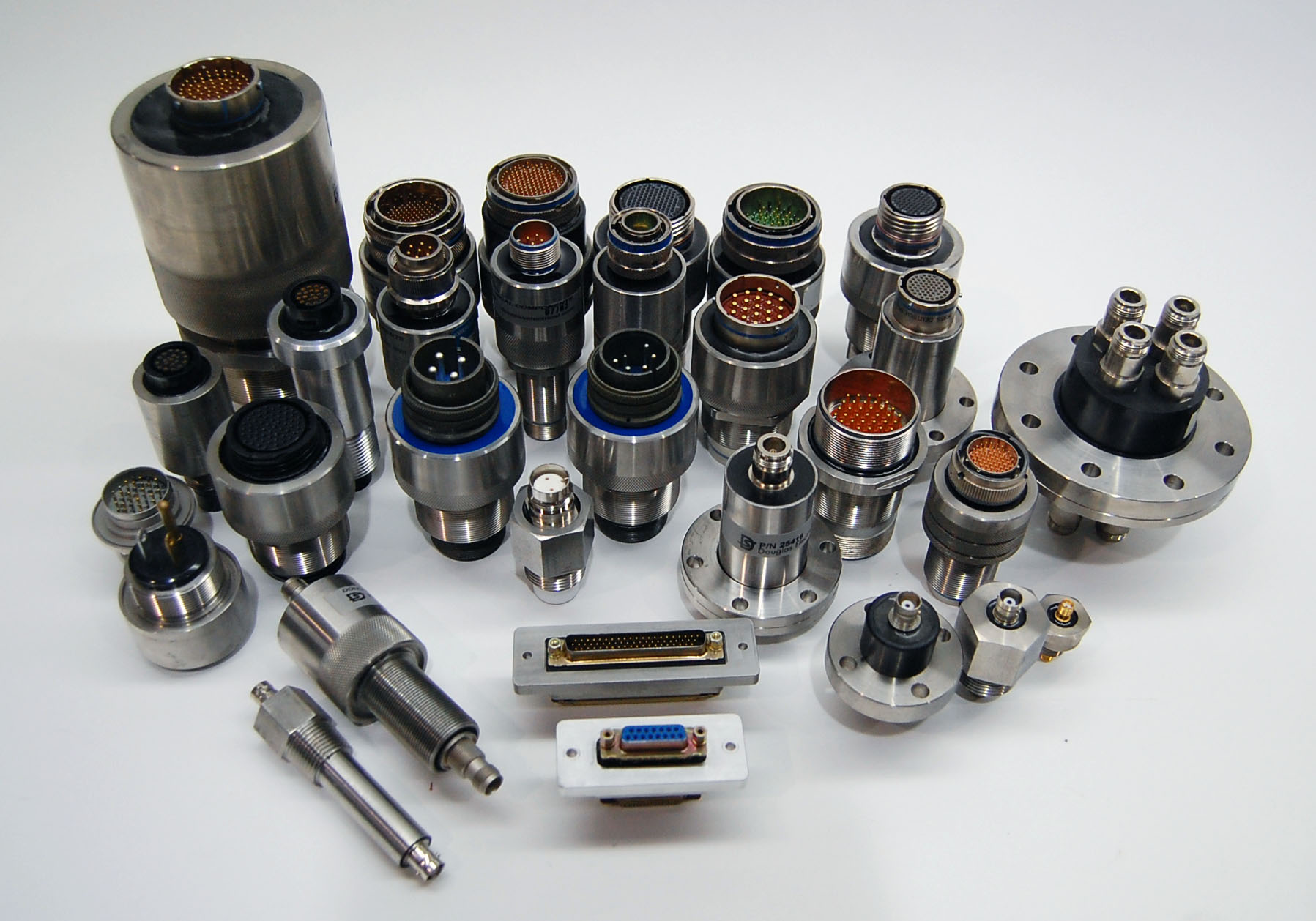
Hermetic Connector Feedthroughs
PotCon Series
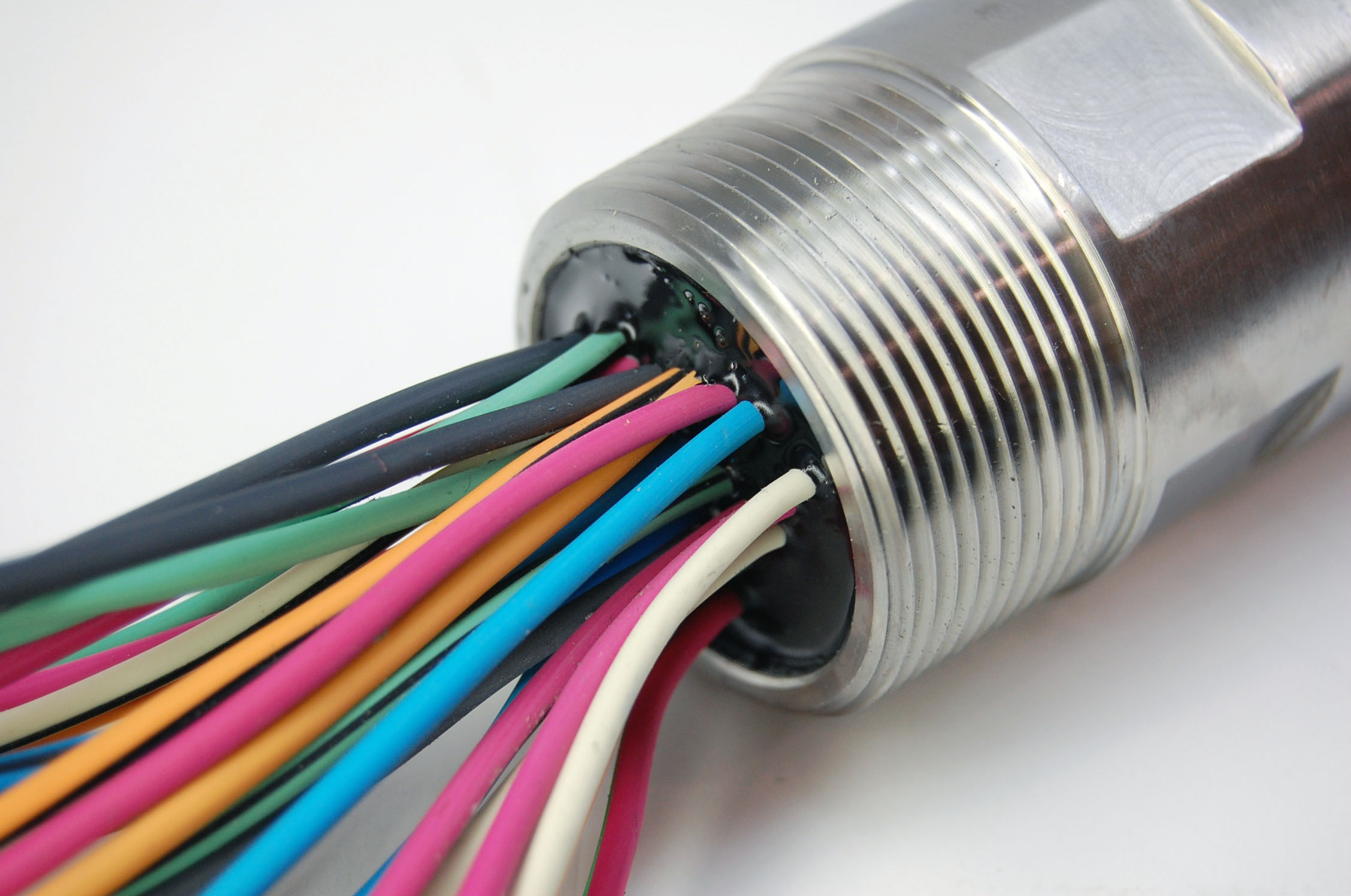
Hermetic Wire Feedthroughs
DuctorSeal Series
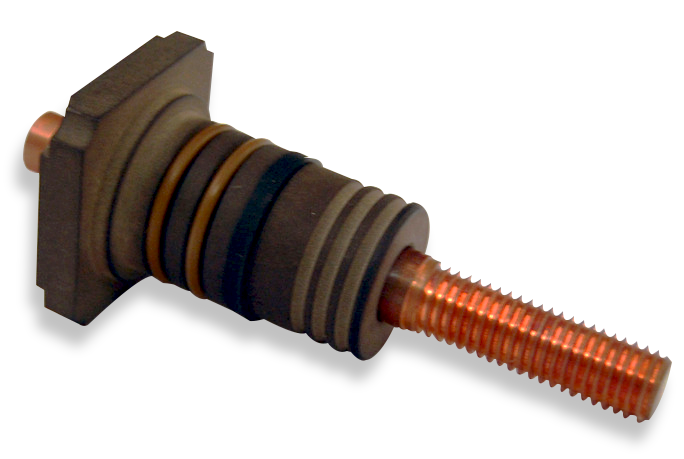
Hermetic Power Feedthroughs
StudSeal Series
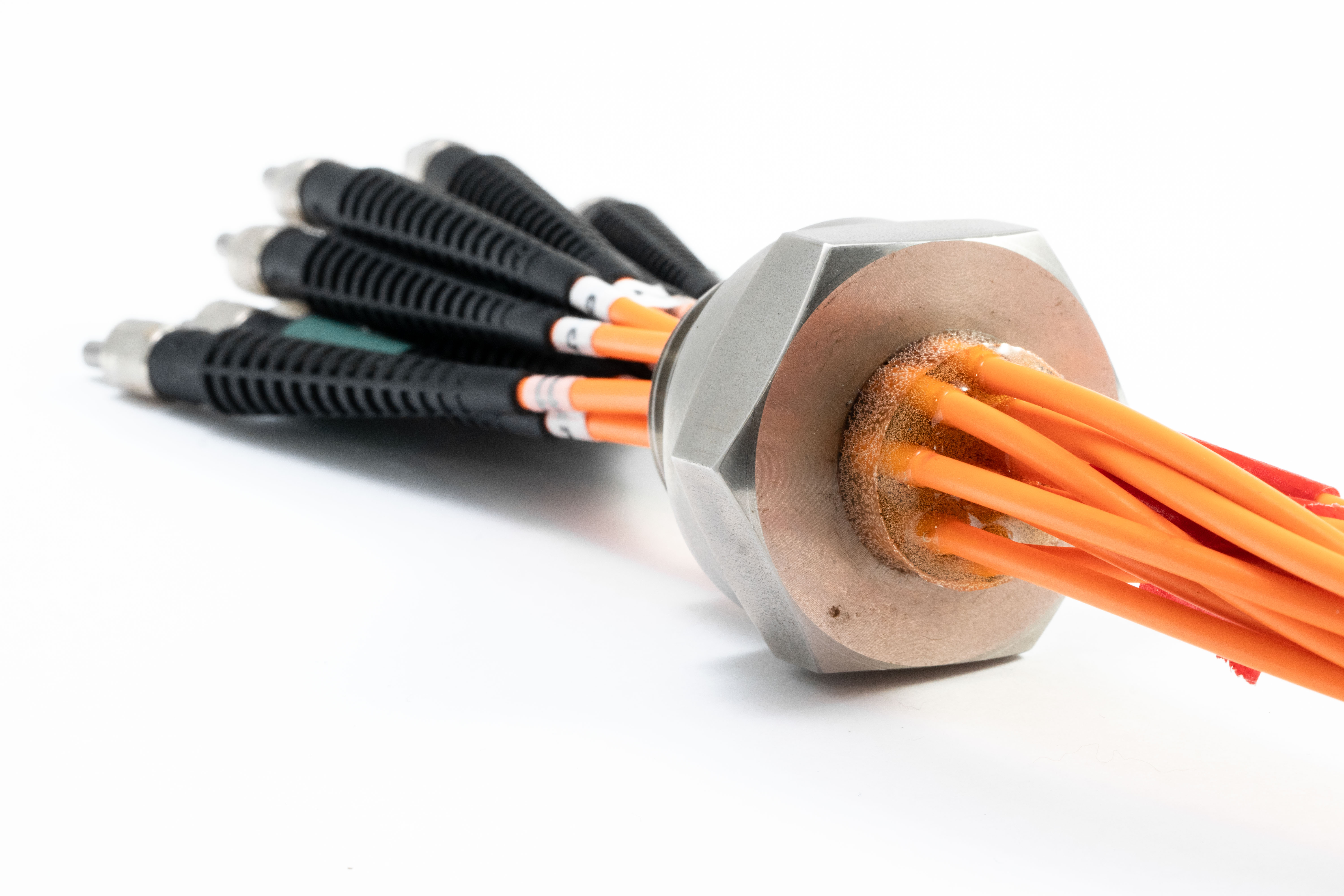
Fiber Optic Feedthroughs
OptiSeal Series

